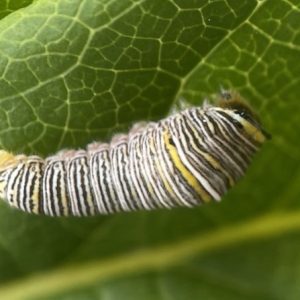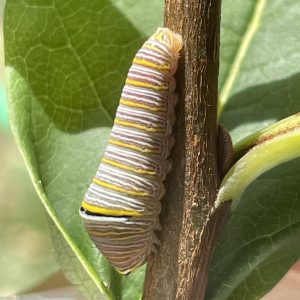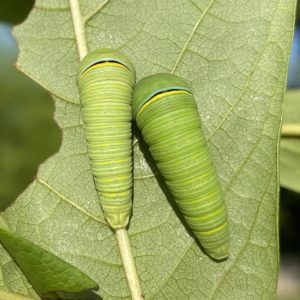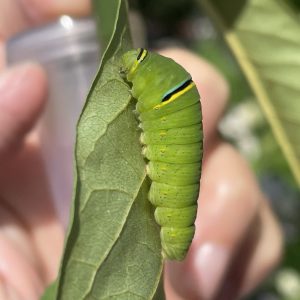One day in mid-July, DelNature member Kate McDonald was checking on the pawpaw trees she’d bought at the 2021 Fall Native Plant Sale when she discovered tiny caterpillars and eggs on the leaves.
A quick Google search confirmed what she suspected – they were from the zebra swallowtail (Eurytides marcellus), a native but uncommon butterfly in Delaware, which sits in the northernmost part of the butterfly’s range.
Kate was witnessing a critical evolutionary relationship, and her experience is a perfect illustration of why it’s so important to plant native species.
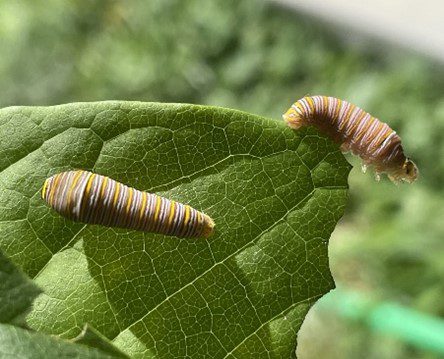
No Pawpaws, No Zebra Swallowtails
The zebra swallowtail’s caterpillars eat only pawpaw (Asimina triloba) leaves or flowers. Without pawpaws, there would be no zebra swallowtails.
The pawpaw produces the largest edible fruit in North America, with seeds so big that animals living today, aside from bears, can’t ingest and disperse them.
Until about 13,000 years ago, the pawpaw relied on huge animals like mastodons and ground sloths to spread its seeds. While small mammals like raccoons and squirrels assist in local movement of seeds, today, pawpaws must depend on people – like the McDonald family – to plant them in new places.
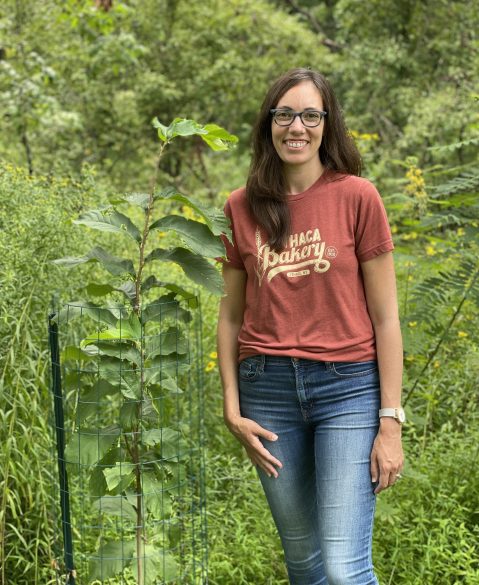
Plant It, and They Will Come
Kate wasn’t thinking about any of this when she bought the two trees.
“Over time, we’re replacing stands of invasives at the edge of our yard with native plantings, and also converting a section of the grass into a wildflower meadow,” she says. “We chose the pawpaws specifically because the kids thought it would be fun to – eventually – grow some fruit.” The taller tree stands only about 6 feet. “I have no idea how the butterfly found us in the first place!” she says.
The Caterpillars Head to Ashland
Zebra swallowtails like to lay their eggs on the fresh new leaves at the tips of the branches, usually just one per limb. If the newly hatched caterpillars encounter each other, they can be cannibalistic, presumably to protect their food supply.
These leaves are easier to see when the trees are small. But because of the trees’ size, Kate worried there wouldn’t be enough foliage to support the caterpillars. She turned to DelNature staff ornithologist Ian Stewart, whom she knows through her daughter’s birding team, and asked if Ashland Nature Center might want some.
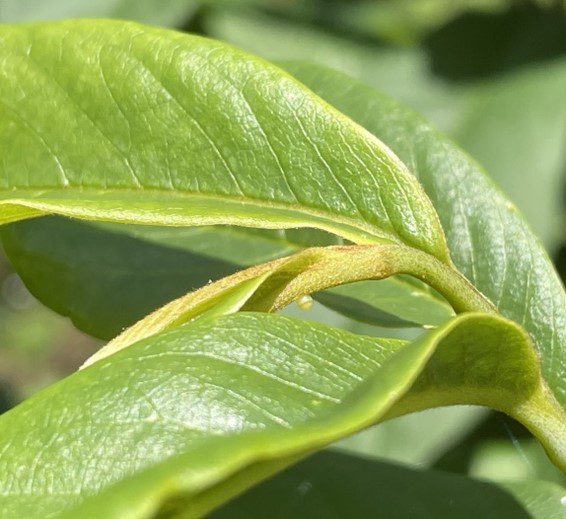
The Butterfly House Team Comes to the Rescue
Ian knew Ashland not only has pawpaw trees, but also a Butterfly House Team, and quickly arranged the transport of some caterpillars and eggs. Currently, zebra swallowtails are not seen around Ashland, and we hoped this would help introduce them.
Having had an experience similar to Kate’s with my own young pawpaws last year, I was the member of the team to accept and raise the zebra swallowtails.
The caterpillars and eggs were so tiny, I put all of the leaves from the carrier into a mesh cage designed for raising caterpillars – safely separated from each other – so that none would be missed. Then I added some fresh pawpaw leaves from my own trees.
Zebra Swallowtails Do Change Their Stripes
In a few days, there were five striped caterpillars crawling around. Some caterpillars keep the same appearance throughout their growth stages, or instars, but the zebra swallowtails look different each time they shed their skin. They also can be much darker or lighter than others in the same stage.
In the first instars, they are striped with configurations of black, white and yellow bands. As they near the end of their caterpillar stage, they turn green and sport a collar of sky blue, yellow and black.
Pictured below: Zebra swallowtail caterpillars change their appearance with every growth stage, or instar
The Swallowtails Form Chrysalises, Begin to Emerge as Butterflies
The caterpillars ate and grew for about two weeks, then began to pupate, or form their chrysalis. The zebra swallowtail chrysalis can be green or brown. The four caterpillars that pupated on pawpaw leaves formed green chrysalises. One formed a brown chrysalis under a rock in the cage.
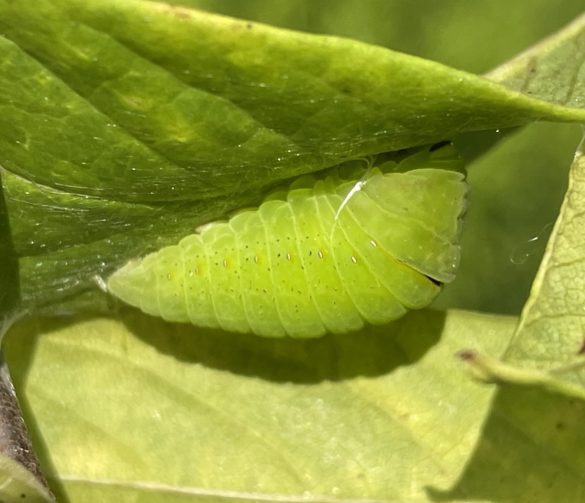
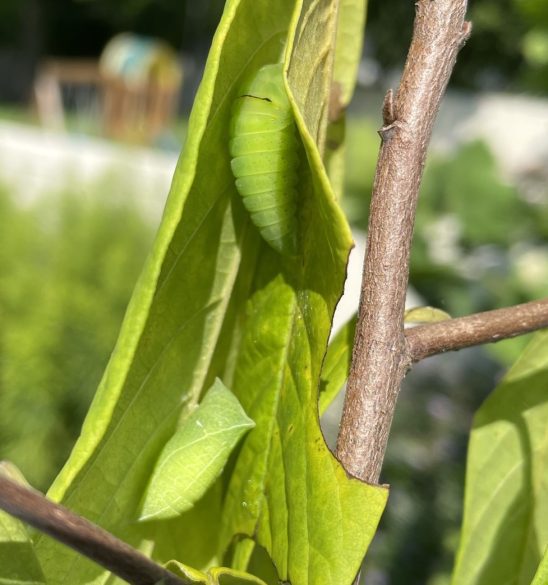
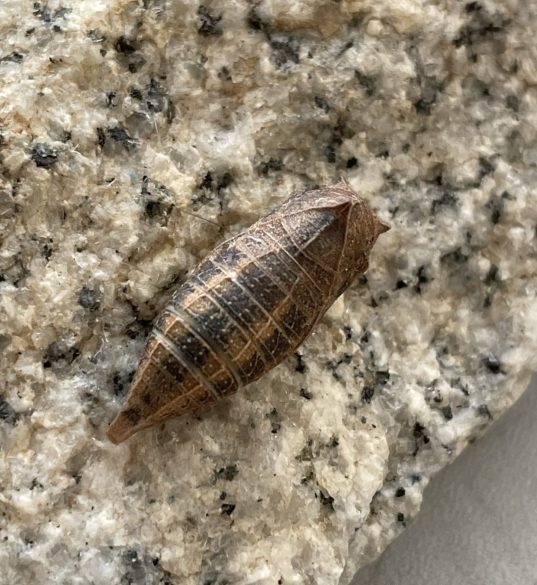
Introducing Zebra Swallowtails to Ashland
About two weeks after making their chrysalises, the stunning black-and-white zebra swallowtails began to emerge. As they did, we released them by the pawpaws outside the Butterfly House.
By introducing the butterflies to Ashland, we hope to encourage this striking swallowtail to stick around and begin reproducing here, continuing an evolutionary story that started hundreds of thousands, if not millions, of years ago.
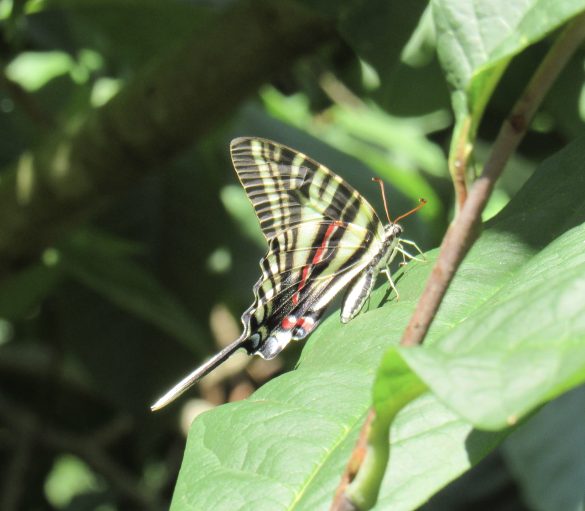
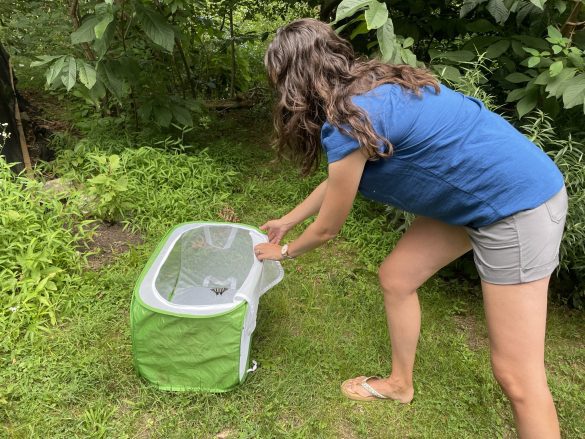
You Can Plant Native, Too
Interested in planting natives? Check out DelNature’s Fall Native Plant Sale, 9 a.m. – 2 p.m. October 7 at Coverdale Farm Preserve.
